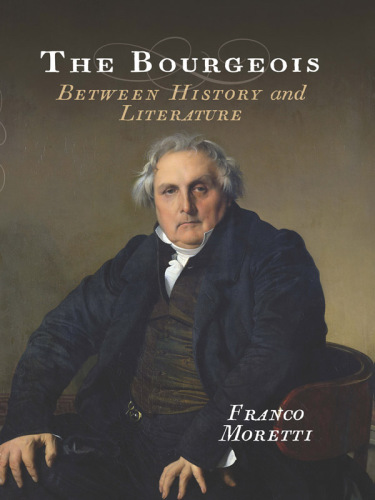
The Bourgeois
Between History and Literature
کتاب های مرتبط
- اطلاعات
- نقد و بررسی
- دیدگاه کاربران
نقد و بررسی

May 6, 2013
First named in the 11th century, the bourgeois class established a dominant presence in world literature starting in the 1700s, as this brief but incisive critical study indicates. Starting with Robinson Crusoe, Moretti shows how conservative middle-class values and their incarnation in character types began to appear in fiction and poetry, shaping the structure of narrative. Crusoe, a model of human industry and the nascent capitalist spirit, sees his island world only in terms of what is “useful” to his endeavors. Moretti dissects Defoe’s grammar and syntax, finding it consistent with the efficiency of Crusoe’s character: “Defoe’s sentences take the successful ending of an action... and turn it into the premise for another action.” Looking to Pride and Prejudice, Middlemarch, Madame Bovary, and other 19th-century classics, Moretti sees novels dominated by “fillers”—details of daily life that convey a sense of “regularity”—and descriptions that are increasingly “analytical, impersonal, perhaps even ‘impartial.’ ” Moretti buttresses his argument with observations from Weber, Lukács, Gramsci, and other theorists, and extends his study to the novels of Machado, Gáldos, Prus, and others. Moretti persuasively demonstrates that his interpretations can be applied broadly to the vast body of 18th- and 19th-century literature.

Starred review from June 15, 2013
Moretti (literature, Stanford Univ.; Signs Taken for Wonders) examines the notion of the 19th-century "bourgeois," their middle-class values, and well-known works such as Daniel Defoe's Robinson Crusoe as well as lesser-known novels such as Dinah Craik's 1856 John Halifax, Gentleman. He also investigates how diction changed through the 19th century as seen in the novels' characters. Added is the expertise of theorists Georg Lukacs and Max Weber, among others, and the analysis of literary databases and proper use of encoded text employed in the digital humanities. For instance, Moretti acknowledges the rise of free indirect style, the subjugation of the subjective, the emergence of description in 19th-century literature as a signifier for "reality," and makes the worthy observation that "bourgeois" style balances a line between comedy and tragedy. Moretti's style works for philosophically minded readers and yet remains a bit slippery owing to its deferment of meaning--a deferment amplified by Moretti's questionable connection of "bourgeois" to "middle class." VERDICT This work is history and literary criticism steeped in a social consciousness for readers who love language and the granularity of word play and for hard-working thinkers.--Jesse A. Lambertson, Arlington P.L., VA
Copyright 2013 Library Journal, LLC Used with permission.

























دیدگاه کاربران